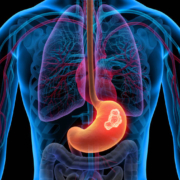Regaining the ability to move easily and free from chronic knee pain is a life-changing prospect. Knee replacement surgery offers just that, with a success rate of 90-95% of total knee replacements functioning well even after ten years.
However, achieving this optimal outcome hinges on a crucial factor – your active participation in the recovery process. Like scaling a mountain, successful recovery from knee replacement surgery requires a well-defined plan, perseverance, and the right tools. This comprehensive guide equips you with the knowledge and strategies to navigate this journey effectively.
Understanding Your Terrain: Pre-Surgery Preparation
Even before surgery, proactive steps can pave the way for a smoother recovery. Here’s what you can do:
- Education is Power: Familiarize yourself with the surgical procedure, potential risks and benefits, and the recovery timeline. Discuss any anxieties you have with your doctor.
- Building Your Support System: Identify individuals who can assist you with daily tasks like cooking, grocery shopping, and transportation during the initial recovery phase.
- Optimizing Your Fitness: If possible, engage in pre-habilitation exercises to strengthen the muscles surrounding your knee joint. This improves your baseline strength and prepares your body for post-surgical rehabilitation.
- Conquering the Clutter: Declutter your living space to minimize obstacles that could lead to falls. Ensure grab bars are installed in your bathroom, and remove any loose rugs that could cause slips.
The Postoperative Plan
Your doctor will provide you with a detailed postoperative plan, and your roadmap to recovery. This plan typically includes:
- Pain Management: Medications will be prescribed to manage pain and inflammation, allowing your body to focus on healing. Open communication with your doctor is crucial to address any concerns about side effects or pain control.
- Wound Care: Maintaining a clean and properly dressed surgical site is essential to prevent infections. Your doctor will provide specific instructions on wound care.
- Range of Motion Exercises: Early and gentle exercises will be initiated to prevent stiffness and promote flexibility in your new knee joint.
- Weight-Bearing Restrictions: Your doctor will advise you on the appropriate amount of weight to bear on your knee initially. This may involve using assistive devices like walkers or crutches for some time.
- Physical Therapy: Formal physical therapy sessions are a cornerstone of recovery. A dedicated therapist will guide you through targeted exercises to strengthen the muscles around your knee, improve flexibility, and restore your range of motion.
5 Common Mistakes After Knee Replacement Surgery
1. Neglecting the Postoperative Plan:
Adhering to your prescribed postoperative regimen and doctor’s advice is vital. Failing to do so can cause complications and impede your recovery progress. For instance, inadequate wound care and bandaging may increase the risk of infection, hindering your healing process. Thus, it’s imperative to stick to your plan diligently, attend all follow-up appointments, and promptly address any unusual symptoms or swelling by consulting your doctor.
2. Inadequate Medication Management:
Proper medication intake is crucial for managing post-surgery pain and inflammation. Skipping doses due to concerns about addiction or side effects can prolong discomfort and delay healing. Openly discussing any concerns or adjustments with your healthcare provider ensures effective pain management while minimizing risks.
3. Rushing Rehabilitation or Returning to Work Prematurely:
Although the desire to resume normal activities promptly is understandable, pushing yourself too hard can compromise your recovery. Overexertion strains the newly replaced knee joint and may lead to complications. Embracing patience and allowing your body the time it needs to heal is essential for optimal outcomes.
4. Neglecting Nutrition:
Nutrition plays a pivotal role in tissue repair and overall well-being during recovery. A balanced diet rich in essential nutrients accelerates healing. Prioritizing fruits, vegetables, lean proteins, and whole grains supports your recovery journey and enhances your overall health.
5. Underestimating the Importance of Physical Therapy:
Physical therapy is indispensable for knee replacement recovery, aiding in mobility, flexibility, and range of motion. Skipping or insufficiently participating in recommended sessions may impede progress and result in stiffness. Regular attendance and active engagement in physiotherapy sessions are critical for achieving optimal outcomes. Collaborating with your physical therapist to maintain motivation and interest in exercises ensures a successful rehabilitation journey.
Conclusion
Knee replacement surgery offers the potential for a renewed lease on life, free from chronic knee pain. By following the strategies outlined in this guide, actively participating in your recovery process, and embracing a commitment to healthy habits, you can conquer the climb and reach the summit of a strong, healthy knee. Remember, you are not alone on this journey. Your doctor, physical therapist, and support system are there to guide and encourage you every step of the way. Embrace the challenge, celebrate your progress, and look forward to a future filled with renewed mobility and freedom.












